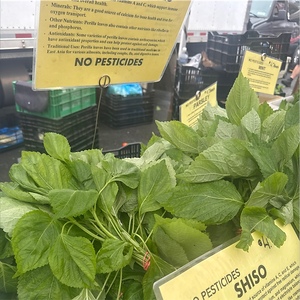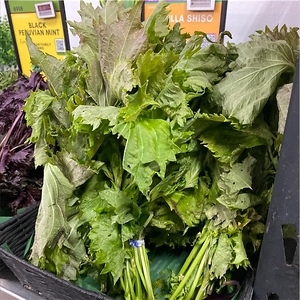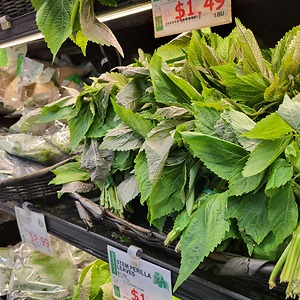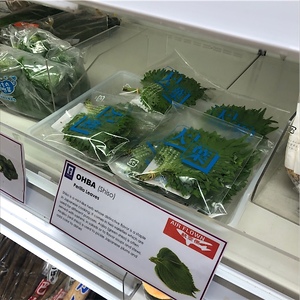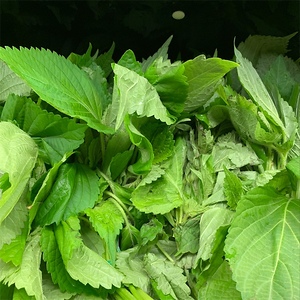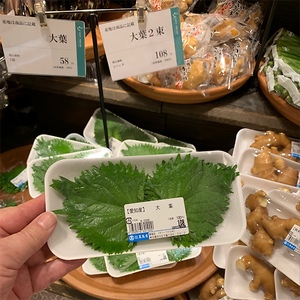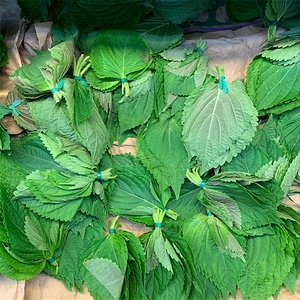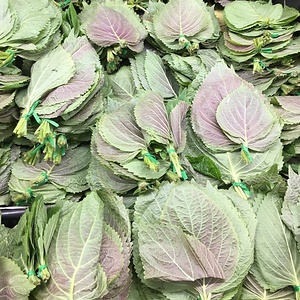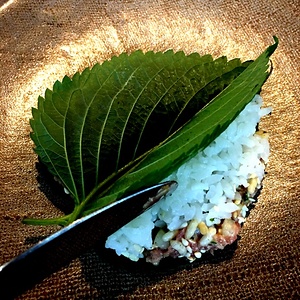

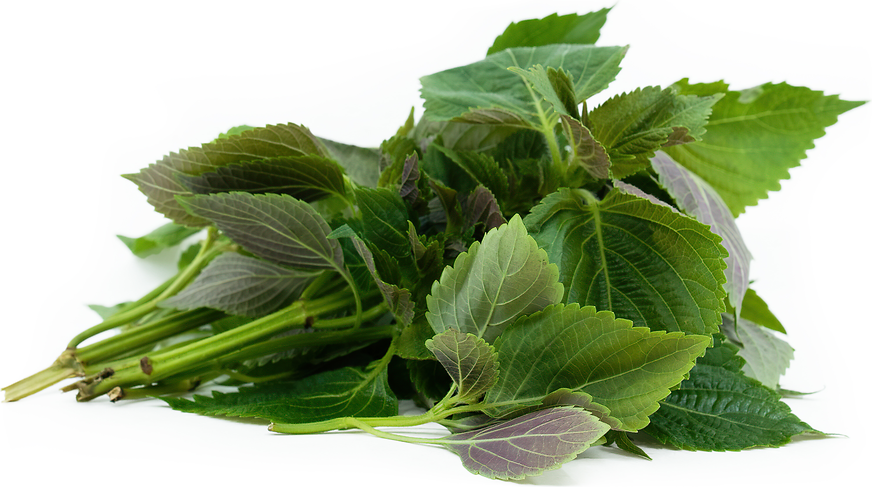
Perilla Leaves
Estimated Inventory, lb : 0
Description/Taste
Perilla leaves vary in size and shape, depending on the variety and maturity at harvest, and typically average 7 to 12 centimeters in length and 5 to 8 centimeters in diameter. The leaves have a broad, ovate, round to spade shape and taper to a distinct point on the non-stem end. Each leaf is pliable in nature and features serrated edges with a dark green to purple coloring. Some varieties will showcase saturated red-purple hues, while others may only be blushed with tint on the underside of the leaf. The leaf’s surface is generally smooth and lightly textured, a feel created from the prominent veining, and some varieties are covered in a layer of velvety fuzz. The plant’s stems are notably square, green, and hairy. Perilla leaves are edible raw or cooked and are renowned for their robust, musky, and minty aroma. Raw leaves have an herbaceous, grassy, green, and subtly bitter taste with basil, anise, and mint nuances.
Seasons/Availability
Perilla leaves are available year-round.
Current Facts
Perilla leaves, botanically classified as Perilla frutescens, are an Asian species belonging to the Lamiaceae or mint family. The leaves grow on annual plants reaching up to ninety centimeters in height and have historically been used as a medicinal and culinary ingredient. Perilla is a fast-growing species often labeled as invasive in some non-native regions worldwide, as it is heat tolerant, drought resistant, and has the ability to be grown in many different soils. The leaves and seeds are the most common elements of the plants harvested for culinary use and can be incorporated into fresh and cooked dishes. Perilla leaves are favored for their fresh, herbaceous taste and are traditionally served with richer foods to help balance flavors.
Nutritional Value
Perilla leaves are a source of vitamin C to strengthen the immune system, calcium to support bones and teeth, vitamin A to maintain healthy organ functioning, iron to develop the protein hemoglobin for oxygen transport through the bloodstream, and other nutrients, including phosphorus and vitamin K. Some varieties of Perilla contain anthocyanins, colored pigments in the leaves that provide antioxidant properties to reduce inflammation and protect the cells against the damage caused by free radicals. The leaves, seeds, and stems have also been used in natural medicines throughout East Asia for centuries. In Traditional Chinese Medicine, Perilla is known as Zi Su Ye, and the leaves are added to remedies to lessen coughs, protect against the flu, and reduce abdominal pain after digestion. The leaves are also used topically to soothe the skin and sores. The seeds are incorporated into remedies for coughs and phlegm.
Applications
Perilla leaves have an herb-forward, green flavor suited for fresh and cooked preparations. The leaves are customarily used in Asia to wrap barbequed meats and rice and are savored for their ability to cut through rich or fatty ingredients. In Korea, Perilla leaves are paired with bulgogi and kalbi, and it is typical for homes to have the greens growing in their gardens where they can be picked fresh just before use. They are also added to kimchi or pickled as a salty, tangy, bitter, and herbal condiment. Perilla leaves are incorporated into soups and stews or shredded and used raw as an edible garnish. Try adding Perilla into salads, mixing it into herb-based sauces, or folding it into pancake batter and bread. The leaves are also battered and fried as a crunchy side dish, layered into sandwiches, stuffed into steamed buns, or used to wrap red bean paste in mochi. In Japan, Perilla is known as Shiso and is used to add coloring to pickled plums or is mixed into noodle, vegetable, or rice dishes. Perilla is also used throughout India to flavor curries. Beyond the leaves, Perilla seeds are toasted and ground into a powder. This powder is used as a spice and is sprinkled over desserts, main dishes, and vegetables. Perilla seeds are also pressed into oil and stirred into dressings, chutney, sauces, and meat recipes. Perilla leaves pair well with aromatics such as chile peppers, garlic, and ginger, soy sauce, tofu, grilled meats such as fish, chicken, and beef, citrus, plums, green tea, and soft cheeses. Perilla leaves will keep for a couple of days when wrapped in a damp paper towel and stored in a plastic bag in the refrigerator. Perilla leaves can also be preserved in soy sauce or blanched and stored in the refrigerator for up to a month.
Ethnic/Cultural Info
The name Perilla is sometimes used for several varieties within the species, making it somewhat confusing for classifications and distinguishing between separate plants. The three main varieties include Perilla frutescens var. frutescens, known as Kkaennip, Kka Nnip, or Korean Perilla, Perilla frutescens var. hortella, or Lemon Perilla, and Perilla frutescens var. crispa, named Shiso, Ooba, and Tia To. Some experts also believe there may be as many as five different varieties. In addition to other varieties, the Korean name for Perilla, Kkaennip, creates some confusion as it translates to mean “Sesame leaf” in English, a name used for a different and unrelated species. Perilla leaves are also known as the Beefsteak plant, a descriptor derived from some of the variety’s pigmented coloring. Red-flushed varieties of Perilla have a similar hue to the appearance of raw meat, thus the name Beefsteak.
Geography/History
Perilla leaves are thought to be native to the mountainous regions of Asia, specifically in the Himalayas and areas of China, and have been growing wild since ancient times. The earliest record of the species dates back to the Western Han Dynasty, a period from 202 BCE to 220 CE, and was utilized in Traditional Chinese Medicine. Perilla leaves were later spread throughout East Asia along trade routes and were introduced as a medicinal ingredient to Japan sometime during the 8th and 9th centuries. Over time, the leaves expanded beyond medicinal uses and were incorporated into culinary preparations. The species was also carried to Europe in the mid-19th century and the United States around the late 19th century. Today, Perilla leaves are commercially cultivated throughout Asia, especially in China, Japan, Korea, and India. The species has also naturalized in regions worldwide and is considered invasive in some locations, thriving in disturbed areas in a wide range of soil. Perilla leaves are sold fresh through local markets, specialty grocers, and select distributors worldwide.
Recipe Ideas
Recipes that include Perilla Leaves. One



